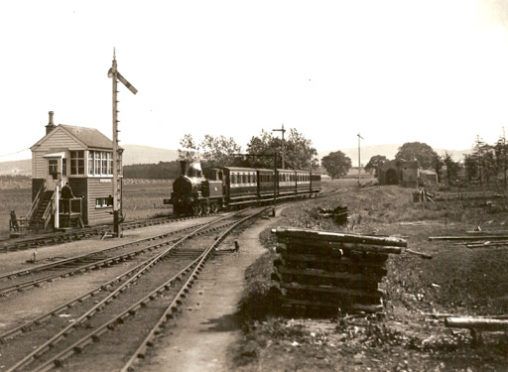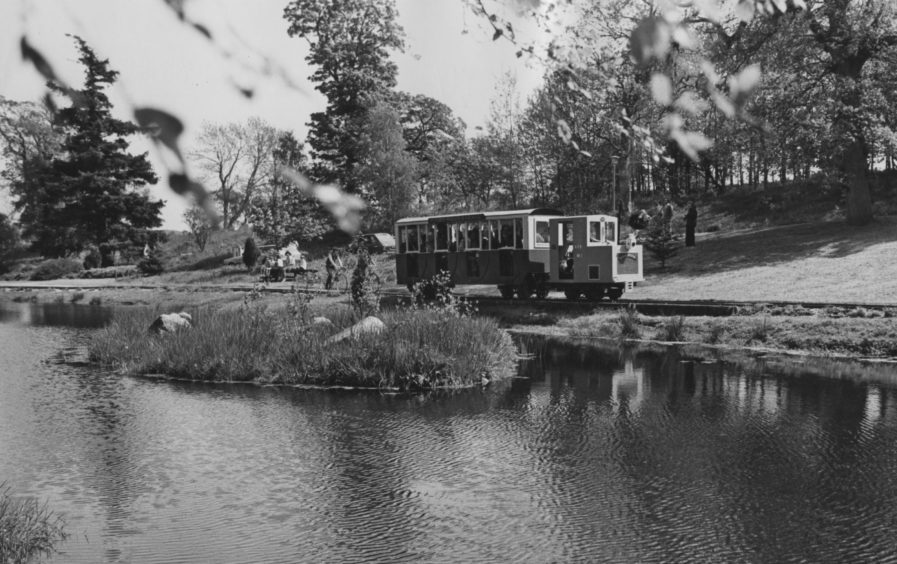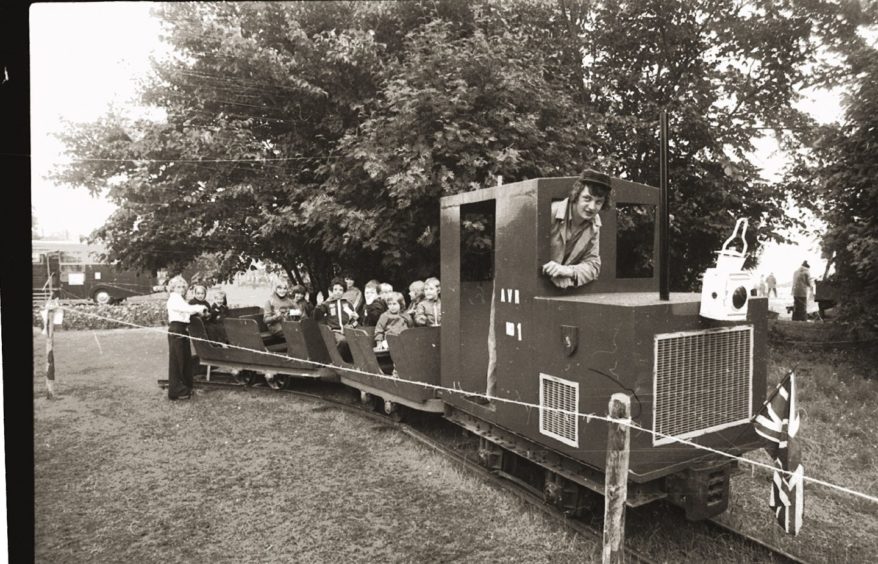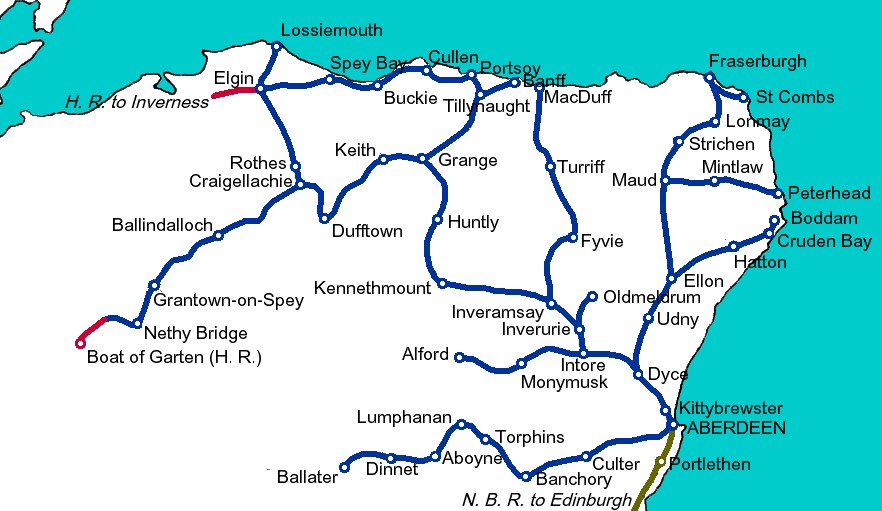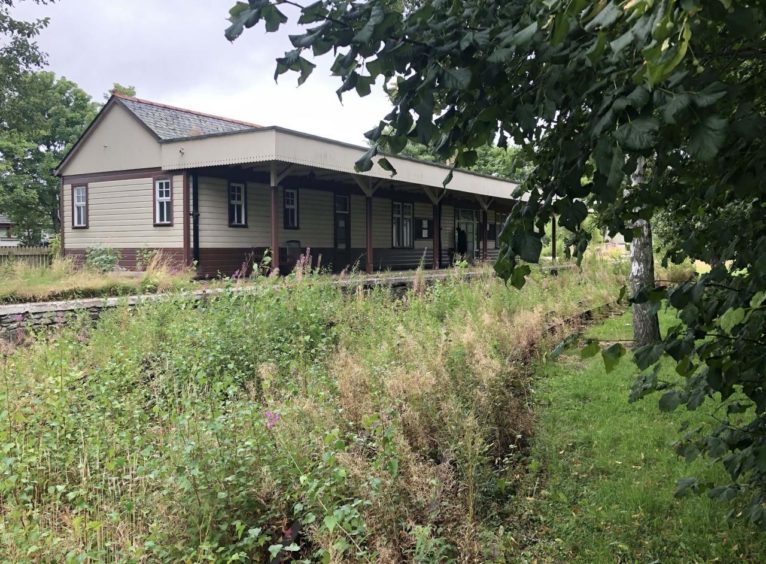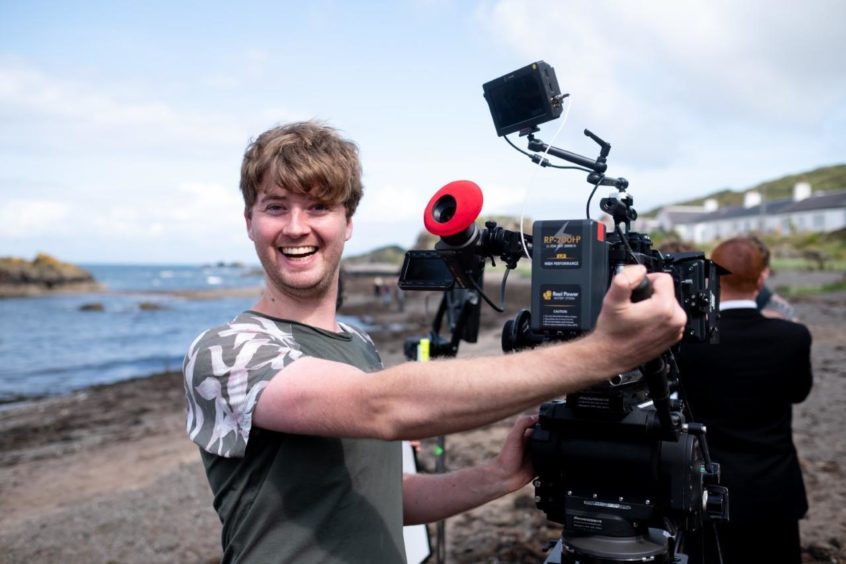It was one of the most treasured routes on the busy north-east rail network in the late 19th and 20th century.
And, although the Alford Valley narrow gauge railway in Aberdeenshire ceased carrying passengers in 1949 – and goods services subsequently came to an end on Hogmanay in 1965 – the line still boasts a mystique, which helps explain why Scottish filmmaker Fergus Cruickshank is creating a new work about this magical little route.
He can remember it from the days when he was growing up in the area and enjoyed watching the trains pass by on their regular journeys.
Recently, though, he has been dismayed by the manner in which parts of the route have fallen into disrepair.
But now, with the assistance of the Doric Film Festival organisers, Mr Cruickshank is determined to highlight the importance of the bygone Alford service.
‘This railway was unique to where I grew up’
He said: “I grew up in Alford, and the trains at Alford Valley Railway were always a highlight during the summer holidays.
“My family and I would get the train over to Haughton Park and have a picnic before catching the last train back home. Now that I’m an adult, the distance from the train station to the park isn’t that far, but as a kid, it was a real adventure.
“When the train didn’t run in the off-peak seasons, my friends and I would wander down the tracks, in a manner reminiscent to the film Stand by Me, even though I wouldn’t have got that reference as a child. The railway was unique to Alford, and I don’t know where else in Aberdeenshire has an attraction that comes close to it.
“When I last visited home, I was really upset to see the railway in such a state of disrepair. I wanted to be proactive about this, and so as a film-maker I am keen to use my skills and help raise awareness to the railway’s fight for survival and give hope for a future where the trains can run again.”
The railway provides a link to the Doric language
He continued: “The emotion of a journey to a landmark achievement is a theme that runs through my work, and I saw a lot of opportunity to bring this theme to the film and share the nostalgic history of the railway with new audiences.
“The Doric Film Festival is a great platform for the film because they celebrate the Doric language, and Alford has a rich Doric culture.
“As a schoolchild, we learned the poems of [innovative literary figure] Charles Murray, and Doric was regularly heard in the school corridors at break times.
“I believe that this is a fantastic opportunity to bring together two different aspects of my childhood into a project, and to help the local community to realise its ambitions of bringing the trains back to Alford.
“I know there are many people who would be delighted if that happened.”
Mr Cruickshank needs your help to create his new film
The Doric Film Festival, in collaboration with Alford Valley Community Railway and Mr Cruickshank, have gone ahead with commissioning a short film about Alford’s railway to premiere on the big screen.
This will both celebrate the service and demonstrate the efforts of the Donside community in securing a future for their local piece of history.
Despite being closed in any guise since 2017, the railway committee is currently raising funds for essential repairs and to showcase the Alford Valley Community Railway organisation’s efforts to bring the past to life for the community and visitors alike.
Between now and the end of February, Mr Cruickshank will be searching for untold stories from local Doric speakers and capturing the effervescent north-east spirit which has kept the charm of the railway alive for so long.
The group’s Facebook page will be sharing questions every week, encouraging people to offer their own memories of the railway online. And, in honouring the Scottish language, this year’s theme at the Doric Film Festival will be: “Jist far I bide”.
Getting the railway back on track and the right lines
Mr Cruickshank has had his films screened at a variety of festivals throughout the United States and in Europe and the UK.
He has now turned his attention to the village where he was raised in a bid to preserve a “crucial” part of local history and bring the project to a much wider audience.
He added: “The Alford Valley Railway has been an important part of the community since it opened, and seeing the railway closed is so sad for many of us.
“I hope to bring life back to the railway by sharing these memories and celebrating Alford’s rich culture and history.
“The Doric Film Festival is the perfect home for this film and I would like to invite
everyone to join me on this journey down the railway’s history.’
“For more info about the Alford Valley Community Railway, and to share your own memories with the film team, please visit www.facebook.com/AlfordValleyRailway.”
A short journey through the Alford Railway lineage
The construction of the Alford Valley Railway started in 1856 and it opened in 1859 as a Great North of Scotland Railway branch line from Kintore railway station, north-west of Aberdeen, with stations at Kemnay, Monymusk, Tillyfourie, Whitehouse and Alford.
The line also served Kemnay Quarry and three other granite quarries in the area. The summit of the line was just west of Tillyfourie at 618 feet (188m) where a mile-long cutting 30 feet deep required cutting through particularly hard granite.
The train took just over an hour for the 16-mile journey and, until 1883, the third class fare on the daily train could not be more than a penny per mile.
In 1923, GNSR was incorporated into the London and North Eastern Railway and, in 1948, the organisation became part of the Scottish Region of British Railways.
The line closed to passengers in 1949, when driver James Tocher brought the last passenger train into Alford station.
The goods service shut down exactly sixteen years later on December 31 1965, when the last train was driven by Robert Asher, with his companions, guard James Elder, both from Aberdeen, and fireman Walter Mearns, from Inverurie.
There have been concerted efforts to bring it back to life on several occasions and special Christmas services have been organised on the route.
This latest venture aims to crank up the profile of one of the region’s best-kept secrets.
This Fergus isn’t singing the blues about films
Fergus Cruickshank is increasingly making waves in the world of film-making.
But although he has grown accustomed to appearing at international festivals, he has never relinquished his affection for his roots in Aberdeenshire.
He said: “I have been working in the Scottish film and TV industry for the last five years as a camera assistant, and I have worked on high-end dramas such as Outlander and Rillington Place.
“My industry work has given me the skills and knowledge to produce and create my own films. I have produced films funded by Creative Scotland, and Young Scot and I have another film in production at the moment funded by the Gaelic Arts fund.
“I collaborate with a lot of Scottish film technicians, and I have developed strong working relationships with Glasgow-based rental companies who have supported my work, and I have received backing from the Scottish Documentary Institute.
“This year I have two films that are entering the film festival circuit, Patter Merchant, and Benched and I believe that these films will do well in the festivals.”
